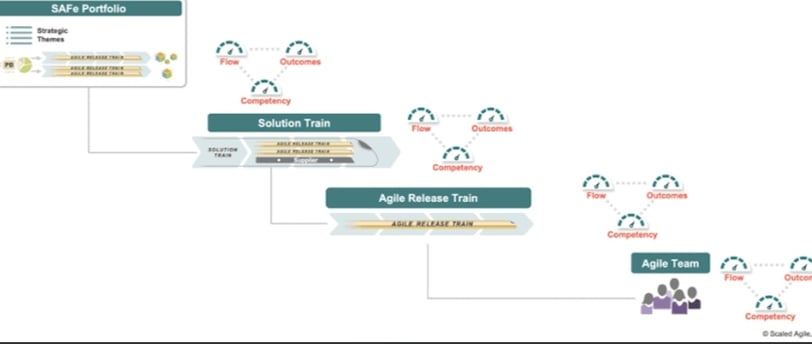Demystifying Portfolio SAFe
Blog post description.
Roopesh Mathur, CTO AgileDevOps, Smart Management Consultancy
11/26/20232 min read


Scaled Agile Hierarchy Simplified
Demystifying Portfolio SAFe:
Journey through Large Solution SAFe and Agile Release Trains
Introduction
In today's fast-paced world of software development, organizations strive to deliver high-quality products rapidly and efficiently. To achieve this, many companies are adopting agile methodologies, such as the Scaled Agile Framework (SAFe), which provides a structured approach to scaling agile practices across the entire organization. One of the key components of SAFe is Portfolio SAFe, which facilitates the coordination and alignment of multiple agile teams working on large solutions. In this blog post, we will dig deeper into the structure of Portfolio SAFe and explore how it encompasses Large Solution SAFe, Solution Release Trains, and Agile Release Trains.
Understanding Large Solution SAFe
At the highest level, Portfolio SAFe comprises Large Solution SAFe, which serves as the foundation for managing large and complex solutions. The goal of Large Solution SAFe is to bring together multiple Agile Release Trains (ARTs) and Solution Release Trains (SRTs) to develop, deliver, and operate complex software-intensive solutions. Think of Large Solution SAFe as a blueprint that provides guidance on how to orchestrate the work of various Agile teams involved in a project.
Solution Release Trains (SRTs)
A Solution Release Train (SRT) is a highly organized group of Agile teams working towards a specific solution, such as a product, product line, or system. SRTs are responsible for the development, deployment, and release of a solution and ensure that it aligns with the business objectives. They typically consist of multiple Agile teams, each contributing to different aspects of the solution development lifecycle, such as architecture, UI/UX design, programming, testing, and documentation.
Agile Release Trains (ARTs)
Within each Solution Release Train, there are multiple Agile Release Trains (ARTs). An Agile Release Train is a self-organizing, cross-functional team of five to twelve individuals who work together to deliver value incrementally in the form of system features, user stories, or other deliverables. ARTs are designed to be autonomous and collaborate closely to ensure seamless integration between the various solutions being developed. They follow agile practices and iterative development to deliver value regularly.
Various Forms of Agile Teams
Agile teams within an Agile Release Train can take different forms depending on the organization's needs and the nature of the solution being developed. Some common forms include:
1. Feature Teams: These teams are responsible for end-to-end implementation of specific features or user stories. They comprise individuals with a mix of skills required to complete the development, testing, and deployment of a feature.
2. Component Teams: These teams focus on developing and maintaining specific components or modules of the solution. They collaborate with other teams to integrate their work and ensure the overall solution's functionality.
3. DevOps Teams: These teams focus on streamlining the software development process by automating build, deployment, and release activities. They work closely with Agile teams to ensure rapid and reliable delivery of the solution.
Conclusion
In a nutshell, Portfolio SAFe provides a structured approach to manage large and complex software solutions by incorporating Large Solution SAFe, Solution Release Trains, and Agile Release Trains. Large Solution SAFe acts as the foundation, bringing together multiple Agile teams within Solution Release Trains to develop, deliver, and operate the solution. Agile Release Trains, in turn, consist of various forms of Agile teams that collaborate closely to deliver value incrementally. By leveraging Portfolio SAFe, organizations can achieve scalability, alignment, and effective coordination across their agile teams, ultimately resulting in better-quality products developed more efficiently.
